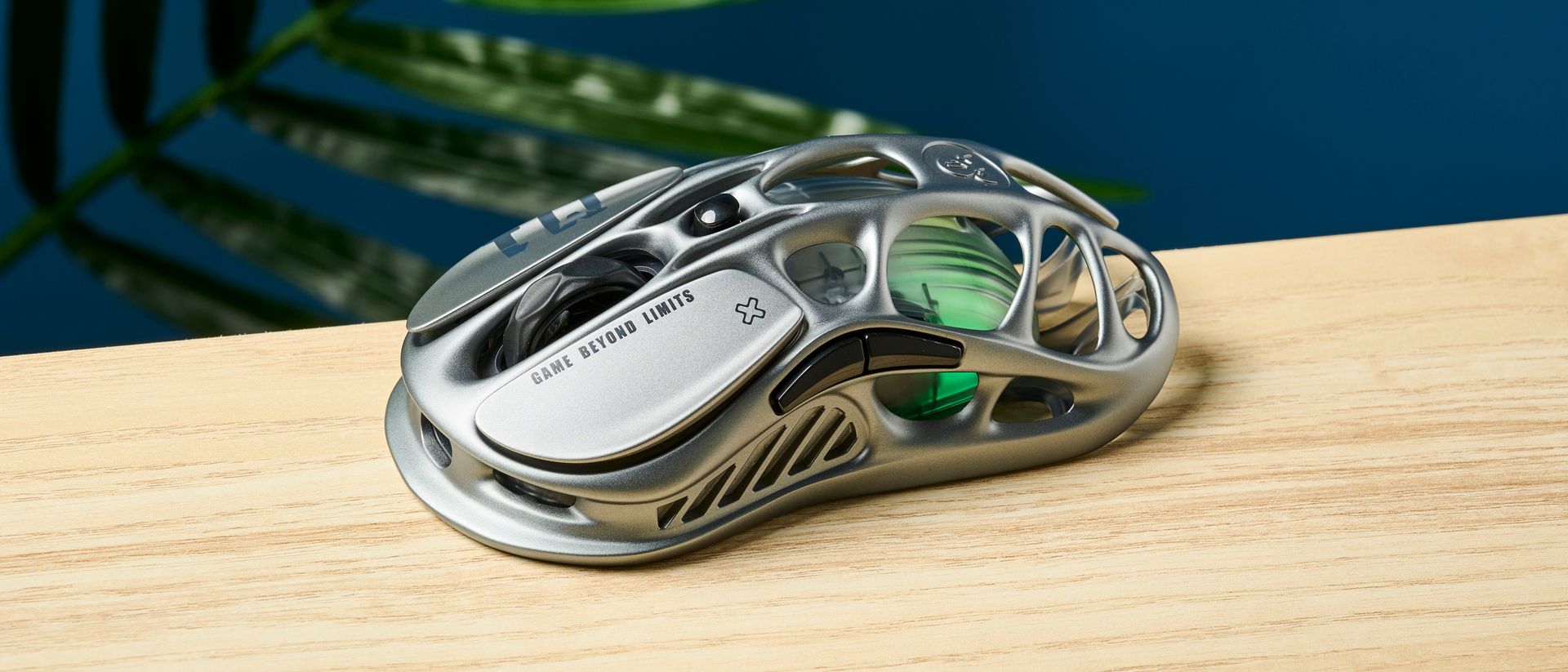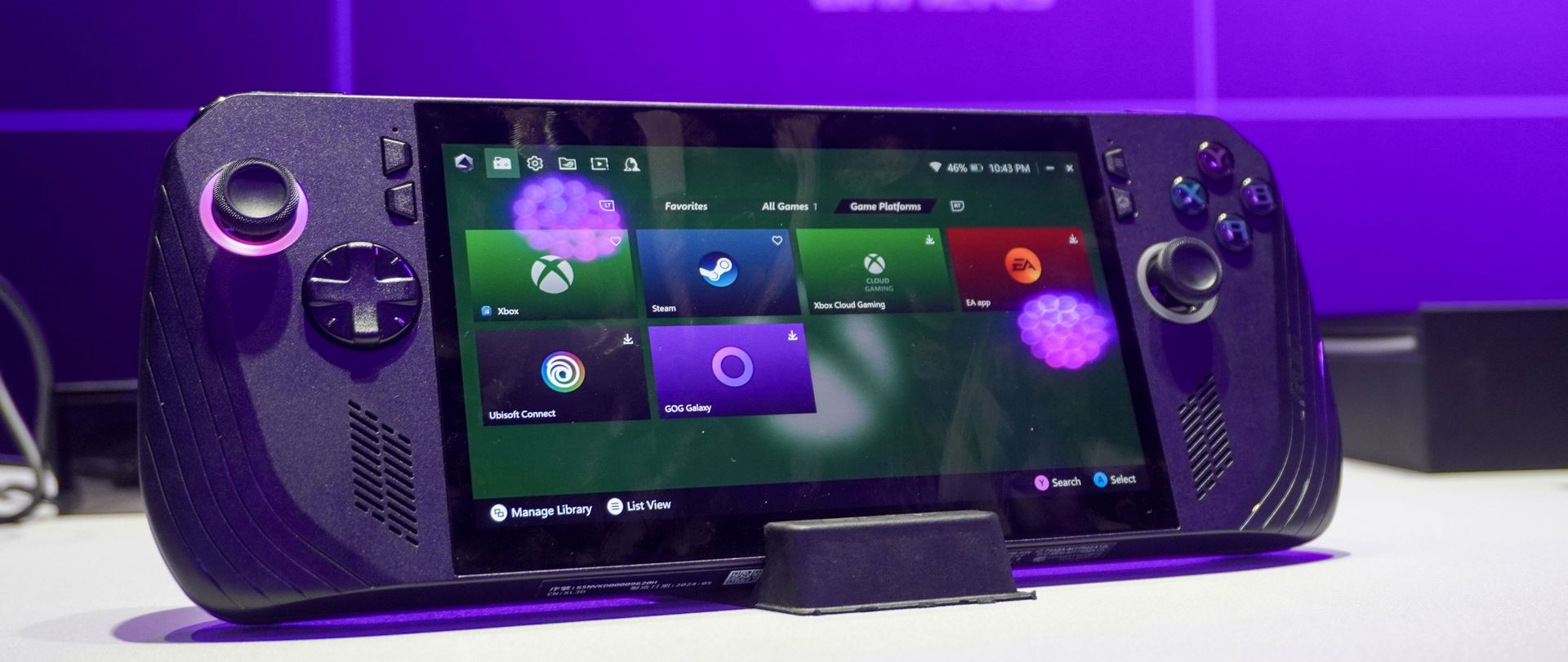Trade in Meta Quest Pro
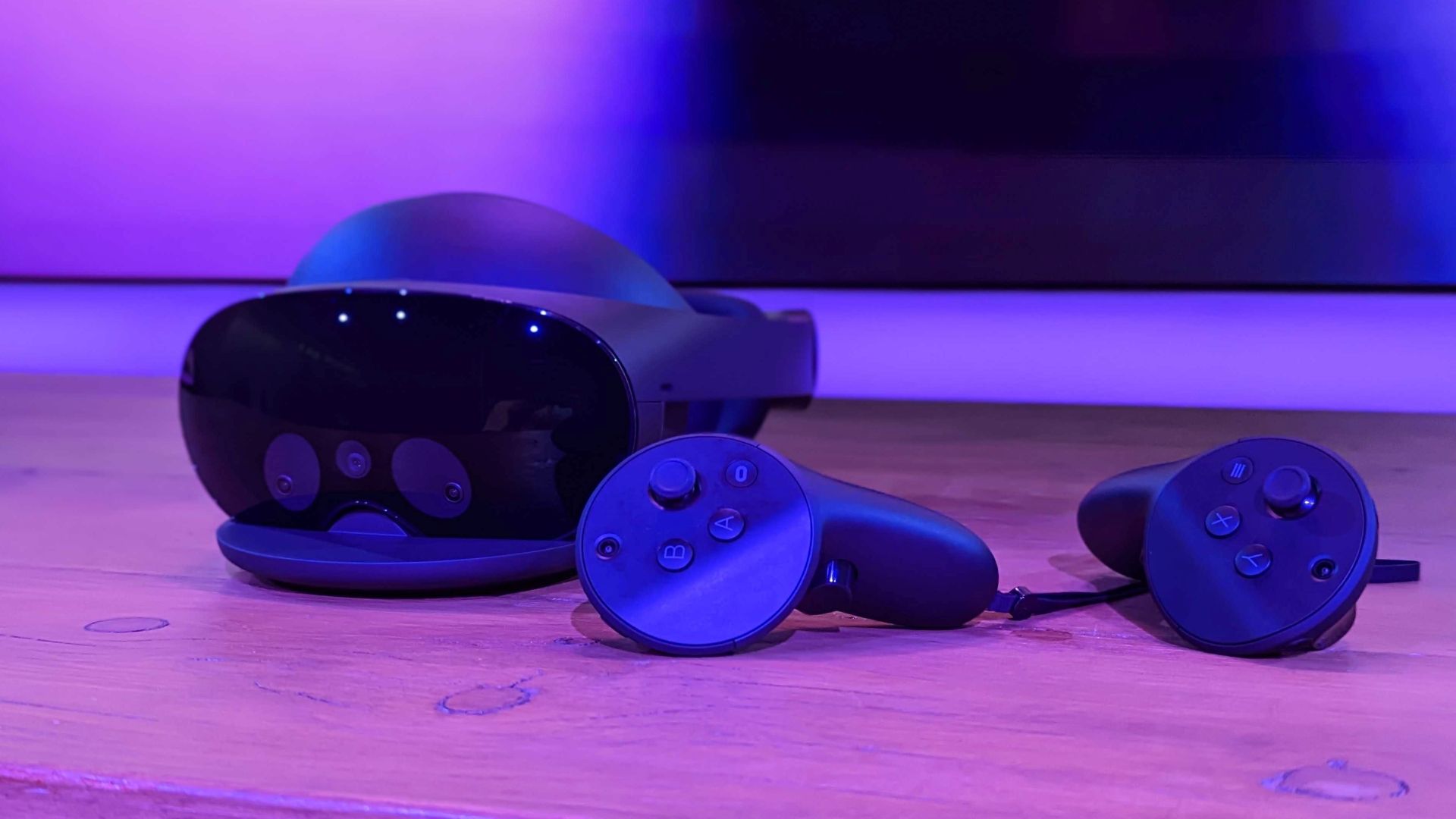
(Image credit: Future)
The Meta Quest Pro is an impressive device, but it’s not quite the ultimate VR headset we were anticipating.
Sure, it comes with 12GB of RAM, a more powerful Snapdragon XR2+ chip, and 256GB of storage space that’ll help it run all Oculus Quest 2 games comfortably. But based on our experience with the headset it’s clear that the Quest Pro is a powerful mixed reality device – not a headset that separates you completely from the real world.
Its new color passthrough feature, in conjunction with the gap around the sides and bottom of the headset, gives you a clear view of the real world even while you’re immersed. However, while this makes experiences that blend the real and virtual worlds feel more immersive, we’re worried that true-VR games may suffer.
We’re also disappointed by the headset’s lackluster battery life, and we’re not convinced that face tracking is more than a gimmick right now – though eye tracking might have some promise.
We’ll have to test this headset out more before we’re confident in our opinion of it, but right now we’d recommend thinking about what you want from a headset – and of course reading this review – before you buy this device. If you’re not certain that you want an MR headset over a VR one, $1,500 / £1,500 (around AU$2,400) is an awful lot of money to spend.
META QUEST PRO: PRICE AND AVAILABILITY
As Meta said during the Meta Connect 2022 keynote, the Meta Quest Pro is ready to preorder now for $1,500 / £1,500 / AU$2,450.
We are Tradelectronics, licensed second-hand electronics dealer located in Sydney CBD, experts in trading used laptops, old cameras & lens, and used mobile phones. Fast, Reliable & We Pay More! Get a free quote on your favourite WhatsApp, Facebook, SMS & Email, instant reply!
| Click icon for WhatsApp Quote | Click icon for facebook Quote |
 |
 |
- We are open from Mon – Sat 12pm – 7pm
- Get your free quote from WhatsApp and Messenger are highly recommended, we can guide you through in finding the accurate specs for your laptops, cameras & lens, mobile phones as well. As such we can provide a more precise quote for you.

Here’s what comes packaged in the Meta Quest Pro box; you get a headset, controllers and a boatload of cables (Image credit: Meta)
Compared to the Oculus Quest 2 this is quite a hefty price increase – it’s around four times more expensive – but it doesn’t seem quite as pricey next to other premium headsets. Case in point, if you factor in the price of a half-decent PC which you’ll need to run it, a Valve Index-powered VR setup will set you back about the same amount – the headset alone costs $999 / £919 (about AU$1,430), while a VR-ready PC is at least $500 / £500 / AU$800.
As for the Meta Quest Pro’s availability, you can preorder it right now from the Meta Store(opens in new tab). The new headset will start shipping, and will be in stores, from October 25, 2022.
META QUEST PRO: DESIGN
Straight away it’s clear that the Meta Quest Pro has some major design changes compared with the Oculus Quest 2 – and we’re not just talking about its all-black exterior, where the Quest 2 is all-white.
The first upgrade is to the strap, with the Quest 2’s all-elastic one being swapped out for a plastic strap that’s near-identical to the Elite Strap that’s an optional extra for the Quest 2. The Meta Quest Pro’s strap is equipped with additional padding to make it comfier and uses a wheel for adjusting the fit, which makes it easier to get a secure yet not-too-tight fit.
The strap isn’t just for comfort – it also houses the Meta Quest Pro’s battery. This means that unlike the Quest 2, the Meta Quest Pro isn’t front-loaded in terms of its weight distribution; instead, the weight of the headset is spread out across your head. Because of this, even though the Pro is 219g heavier than the Quest 2 at 722g, it actually feels lighter and more comfortable to wear.
But by far the biggest change is one necessitated by the fact that the Meta Quest Pro is a mixed reality, or MR, headset, rather than a VR-exclusive device.
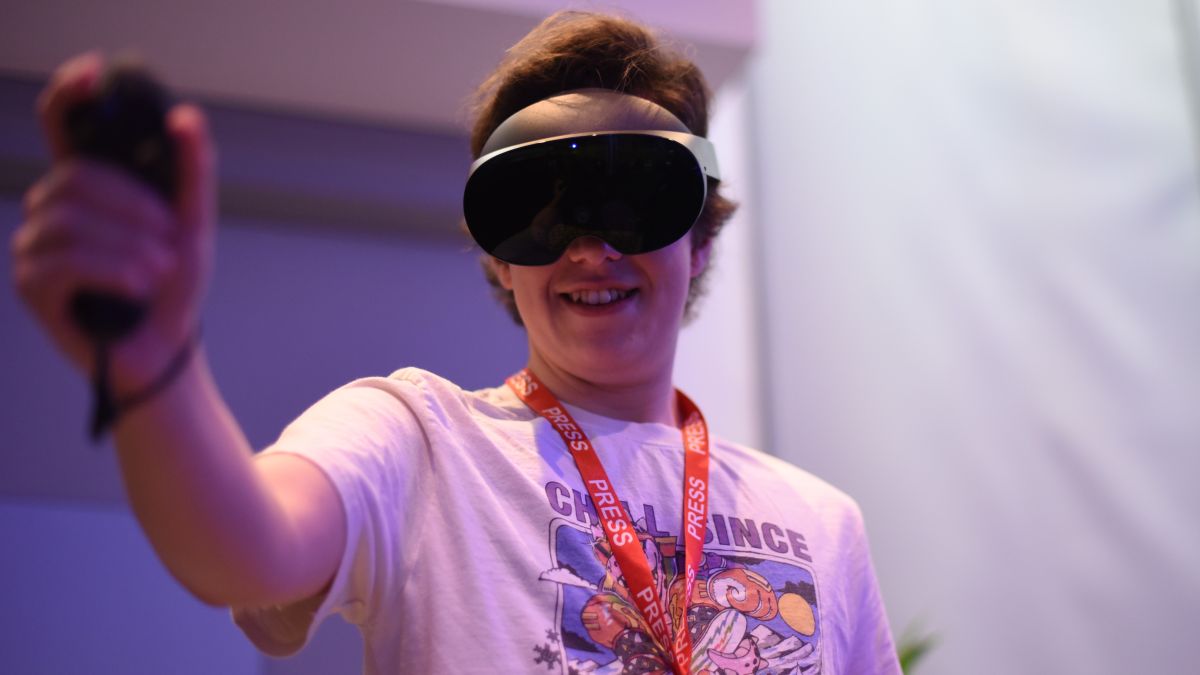
Our reviewer is able to see the world around them while painting in mixed reality (Image credit: Meta)
Unlike the Quest 2, which creates a seal around your eye that entirely blocks out the outside world, the front padding of the Quest Pro is designed to give you a pretty good view out of the sides and bottom of the headset while you’re wearing it.
For mixed reality experiences, this is perfect. Your view of the real world provides you with context and a sense of continuity while you’re in the headset that helps to sell its virtual creations as real. Case in point, when looking at our virtual hands and arms we could follow them off-screen and see them morph into our real arms through the gap, which helped to make our avatar’s limbs feel more real.
But we’re worried that because this headset doesn’t entirely shut you off from the world, purely VR experiences may feel less immersive. At the press event during which we were able to try out the Meta Quest Pro we weren’t able to try any purely-VR demos to verify this, but it’ll be one of the first things we test when we get more time with the headset.
Meta did tell us it will be selling an optional attachment for the Pro that will create a VR headset-like seal to block out the real world, but we didn’t get to try that either, so we’ll be interested to see how effective it is.
META QUEST PRO: FEATURES
It’s not just the design that makes the Meta Quest Pro feel like a device that’s dedicated to mixed reality; its features do too.
One of the biggest improvements we got to experience was the color passthrough feature, which was employed to good effect in all the demos we played. While wearing the headset and playing a mixed-reality game we could see the real world around us in full color, rather than black and white, which is the case with the Quest 2. It’s not quite as vivid as looking at the real world without a headset, but it was still impressive.
While creating a ‘masterpiece’ in Painting VR I could take inspiration from the world around me (before ignoring it completely and creating a mess of yellow), while in Wooorld I was able to turn and see the people who were helping me guess where in the world I was (spoiler alert – three out of five times it was Brazil). I felt simultaneously present in the virtual and real spaced, whereas when wearing the Quest 2 I feel locked into the digital world.
The other big new features of the Quest Pro are its eye and face tracking. Unlike the PlayStation VR 2 demo, during which we got to play Horizon Call of the Mountain, we didn’t get a practical demonstration of what eye-tracking means for the experiences we can play. The technology did, however, enable the headset to detect what changes we needed to make to our fit to ensure that we were wearing the headset correctly, and had the lenses in the best spot for our eyes.

When we puffed out our cheeks the alien avatar in front of us mimicked us; it was very amusing (Image credit: Meta)
As for face tracking, we’re not yet the biggest fan – and we’re glad to hear that it’s a feature that we can easily switch off. While other people at the demo absolutely loved it, we found that the alien avatar that was meant to be mimicking us could only muster a terrifying grimace when we were in fact smiling and laughing.
When we have the chance to try the headset out for longer we’ll see if it works better for other users.
META QUEST PRO: PERFORMANCE AND SPECS
From a performance perspective, our early experience with the Meta Quest Pro has been very positive. In all of our demos, its new Snapdragon XR2+ Platform chip and 12GB of RAM were able to easily handle everything we threw at the headset with no noticeable issues.
Meta’s new headset also comes with some other upgrades over the Quest 2. These include Wi-Fi 6E support, 256GB of storage as default (the Quest 2’s base model only comes with 128GB, while its more expensive model comes with 256GB), and new Mini LED LCD panels that offer 37% more pixels per inch, 10% more pixels per degree, and 75% better contrast.
Not everything is an upgrade, though. The display’s refresh rate is currently capped at 90Hz, where the Quest 2 can deliver 120Hz (which will soon be the default for the older headset). Meta didn’t provide a definitive answer as to whether the Meta Quest Pro will in the future support a refresh rate of 120Hz, only saying that it’s “not optimized” for rates that high. While 90Hz is fine in terms of the minimum refresh rate a headset needs to prevent most users from experiencing motion sickness, the ability to choose higher frame rates would have been nice from Meta’s premium offering.
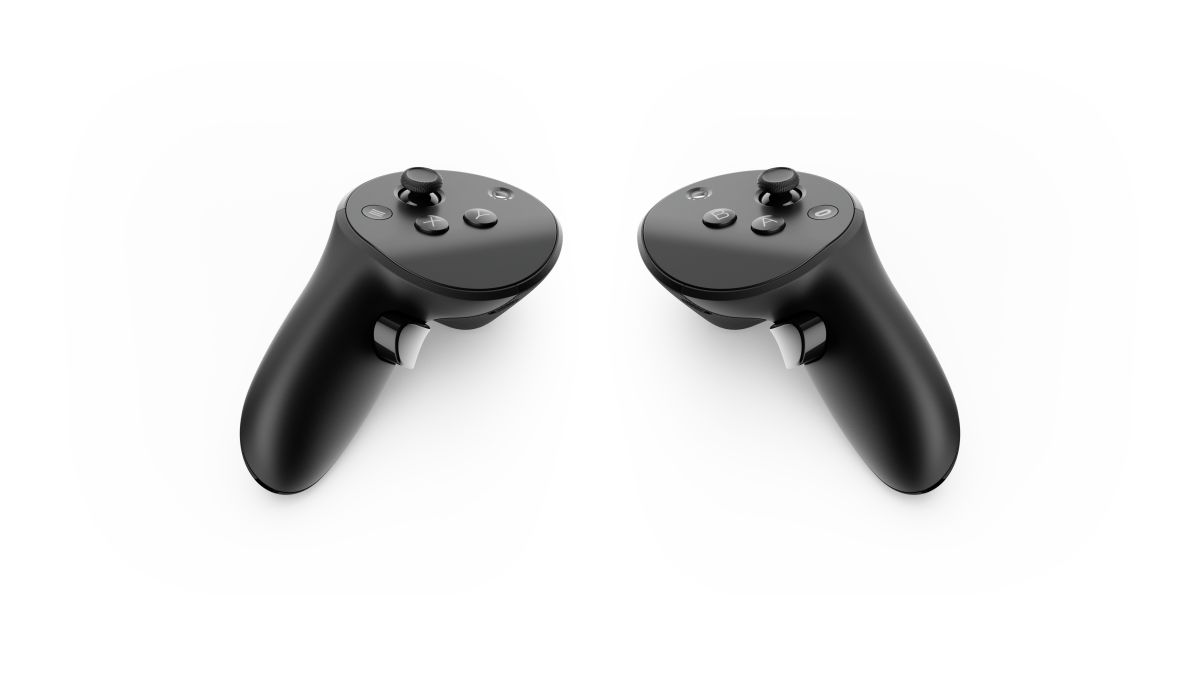
The Meta Quest controllers don’t have tracking rings, they use in-built cameras instead. (Image credit: Meta)
As for the controllers, they look pretty similar to the Oculus Quest 2’s. The only noticeable difference is that they lack tracking rings, which have been swapped for in-built cameras on the handsets themselves.
In addition, the controllers can now incorporate a stylus. If you plug this in and hold the device like a pen, you can ‘write’ on a surface or in mid-air while using a supporting app to write and draw.
Meta also told us that the internal haptics of the controllers have been enhanced, helping them to create more realistic sensations.
META QUEST PRO: BATTERY LIFE
One of our biggest concerns is the Meta Quest Pro’s battery life. Meta says the headset will last for around one and a half to two hours between charges, which feels so remarkably low that one journalist let out an audible “oof” during the briefing when they heard it.
For comparison, the Quest 2 lasts for around two to three hours, with the optional elite strap with battery add-on bringing it up to around four. Considering that the Quest Pro costs roughly four times the price of the Quest 2, and around three times the price of the Quest 2 plus the battery upgrade, we would have expected its battery life to be just as good.

The Meta Quest Pro and its controllers on the charging dock, somewhere it’ll have to spend a lot of time (Image credit: Meta)
While Meta has argued that people don’t really spend longer than a couple of hours at a time in VR / MR on the Quest 2 – and those who do can use it with the charging cable plugged in – the Quest Pro’s comfier design might encourage users to stay immersed for longer. We’ll need to test it out for longer to see how restrictive the battery life really is in practice, but if you’re someone who loves to spend lots of time in VR, this might not be the headset for you.
META QUEST PRO: THOUGHTS SO FAR
The Meta Quest Pro is an impressive piece of hardware to say the least – it really does feel like an all-new device compared to the Quest 2, rather than an Oculus Quest 3-style upgrade.
But while it feels much comfier, and is clearly more powerful than that headset, the shift in focus from virtual reality towards mixed reality may mean this device isn’t quite the product some users were hoping for.
In addition, its battery life and other (more minor) downgrades compared to the Oculus Quest 2’s capabilities are a little short of inexcusable when you consider that this headset costs roughly four times as much as the older hardware.
We’ll be able to deliver our final verdict in our full review, when we’ve had more time to put the Meta Quest Pro through its paces. That said, right now our feeling is that you’ll want to give a lot of thought to whether or not this is the headset for you. If you’re on the fence about picking up the Meta Quest Pro we’d recommend holding off before you splash out, as you might find one of our picks for the best VR headset suits you better.
Source: Techradar


